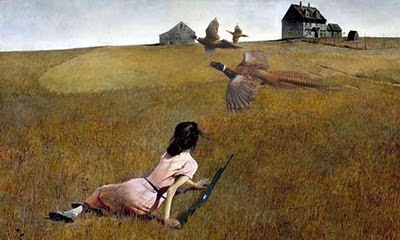There are many ways to arrange books. If you are an interior designer, you might arrange them by color and size. A history buff might order them according to period, or by publication date. Someone with limited shelf space might stack them every which way, to take up as little room as possible. You could arrange them by author, by page count, by publisher, or by frequency of use. You could employ the liquor store technique, arranging them by quality, putting the best books on the top shelf.
 Making a movie—even a very
short video—involves a lot of sitting around and waiting. During one of these periods (waiting
for a battery to charge), Nick was looking over my bookshelves. He became excited when he found my
almost-complete collection of Philip K. Dick novels and story collections. Max was interested in Dick’s writing,
too.
Making a movie—even a very
short video—involves a lot of sitting around and waiting. During one of these periods (waiting
for a battery to charge), Nick was looking over my bookshelves. He became excited when he found my
almost-complete collection of Philip K. Dick novels and story collections. Max was interested in Dick’s writing,
too.
As was I, when I was their
age.
My books are arranged,
roughly, in alphabetical order by author and by genre—sci-fi against the east
wall, crime fiction in the next bookcase, comic books to the west, and so
forth.
It occurred to me, watching
Nick and Max flipping through the Phil Dick books, that it might be interesting
to arrange my books according to the age at which I first read them.
First would be my tattered
copy of Brave Cowboy Bill, a
Little Golden Book from the 1950s. Among the last, as of this writing, would be Explorers of the New Century, by Magnus Mills.
 Here’s a list of books that
made a big impression on me, roughly arranged by the age at which I read
them. (OCD much?) I’ve tried to be honest
here, even though a few of the titles make me squirm to think that I bought
into them at any age. I only
allowed myself one book per author.
Here’s a list of books that
made a big impression on me, roughly arranged by the age at which I read
them. (OCD much?) I’ve tried to be honest
here, even though a few of the titles make me squirm to think that I bought
into them at any age. I only
allowed myself one book per author.
Age 4-7
The Little Engine that
Could —“Watty Piper” and others
Brave Cowboy Bill —Kathryn Jackson
8-12
 Danny Dunn and the
Anti-Gravity Paint — R. Abrashkin
and J. Williams
Danny Dunn and the
Anti-Gravity Paint — R. Abrashkin
and J. Williams
Charlotte’s Web —E.B. White
A Wrinkle in Time —Madeleine L'Engle
Tom
Sawyer —Mark Twain
Lord of
the Flies —William
Golding
“The Hardy Boys” —“Franklin W. Dixon”
Wild Trek —Jim Kjelgaard
White Fang —Jack London
12-16
Strangest of All —Frank Edwards
The Source —James Michener
The Lord of the Rings (Trilogy) —J.R.R.Tolkien
Cat of Many Tails —Ellery Queen
From
Russia with Love by Ian Fleming
The Human Comedy —William Saroyan
Atlas Shrugged —Ayn Rand
The Pearl —John Steinbeck
Cat’s Cradle —Kurt Vonnegut
The Spy Who Came in From the Cold —John LeCarre
Tai Pan —James Clavell
Brave New World —Aldous Huxley
17-25
The Idiot —Fyodor Dostoyevsky
 The Teachings of Don Juan —Carlos Castenada
The Teachings of Don Juan —Carlos Castenada
The Sun Also Rises —Ernest Hemingway
The Puppet Masters —Robert Heinlein
Triton —Samuel R. Delany
Nausea —Jean Paul Sartre
Martian Time-Slip —Philip K. Dick
The Immoralist —Andre Gide
Madame Bovary —Gustave Flaubert
The Savage Mind —Claude Levi-Strauss
The Structure of Art —Jack Burnham
Rogue Moon —Algis Budrys
Junky —William Burroughs
Mushrooms of North America
—Orson K. Miller
Dune —Frank Herbert
The Electric Kool-Aid
Acid Test —Tom Woolf
The Stranger —Albert Camus
25-30
Rebecca —Daphne du Maurier
 In Cold
Blood —Truman Capote
In Cold
Blood —Truman Capote
The Big Sleep —Raymond Chandler
“Solid Objects” —Virginia Woolf
The
Elements of Style —William
Strunk and E. B. White
Dubliners —James Joyce
The Left Hand of Darkness
—Ursula LeGuin
The Adventures of Alyx —Joanna Russ
Baby is Three —Theodore Sturgeon
A Sweet, Sweet Summer —Jane Gaskell
The French Lieutenant’s
Woman —John Fowles
The Great Gatsby —F. Scott Fitzgerald
The
Stars My Destination —Alfred Bester
The Postman Always Rings
Twice —James Cain
30s
Deliverance —James Dickey
Dog Soldiers —Robert Stone
The
Book of the New Sun (tetralogy) —Gene Wolfe
The Cream of the Jest —James Branch Cabell
Unknown Man No. 89 —Elmore Leonard
Leaving
Cheyenne
—Larry McMurtry
Wild Seed —Octavia Butler
Falconer —John Cheever
The Talented Mr. Ripley —Patricia Highsmith
40s and 50s
The Remains of the Day —Kazuo Ishiguro
Lyonesse (trilogy) —Jack Vance
 The Silence of the Lambs —Thomas Harris
The Silence of the Lambs —Thomas Harris
Expendable —James Alan Gardner
The Ice House —Minette Walters
Maus —Art Spiegleman
The Fourth Durango —Ross Thomas
Duchamp —Calvin Tomkins
Spin —Robert Charles Wilson
Explorers of the New
Century —Magnus Mills
Stats
Total Books: 72
Books by men: 60
Books by women: 12
Books by Americans: 45+
Books by British and Irish
authors: 10+
Books by authors of other
nationalities: 10+
Books by African-Americans:
2+
Books written before I was
born: 25
Books written by authors who
are deceased: 40+
Books by gay authors: 10+
Sci-Fi/Fantasy books: 20+
Crime/Mystery books: 10+
Listed authors I’ve read
more than one book by: 61
Listed books I’ve read more
than once: 33
 6. Give the water time to come to a boil. On most stoves, you can adjust the
amount of time required by changing the burner setting (consult the manual that
came with your stove).
6. Give the water time to come to a boil. On most stoves, you can adjust the
amount of time required by changing the burner setting (consult the manual that
came with your stove).





















































